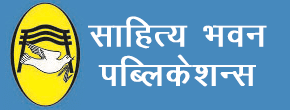उत्तर प्रदेश के विभिन्न विश्वविद्यालयों/महाविद्यालयों में राष्ट्रीय शिक्षा निति-२०२० के अनुरूप च्वाइस बेस्ड क्रेडिट सिस्टम (CBCS) पर तैयार न्यूनतम समान पाठ्यक्रम (Common Minimum Syllabus) के अनुसार बी.ए. सेमेस्टर द्वितीय हेतु शेक्षणिक सत्र २०२१-२२ से प्रभावी पाठ्यक्रमानुसार
प्रस्तुत पुस्तक उत्तर प्रदेश के विभिन्न विश्वविद्यालयों के बी.ए. सेमेस्टर द्वितीय हेतु शैक्षिक सत्र 2021-22 से प्रभावी पाठ्यक्रमानुसार तैयार की गई है |
इस पुस्तक की अद्वितीय विशेषताएं :
पुस्तक में पाठ्यक्रम के प्रत्येक शीर्षक पर विस्तृत पाठ्य सामग्री अत्यन्त सरल भाषा में दी गई है |
नए पाठ्यक्रम में सम्मिलित अनेक शीर्षक (topics) ऐसे है, जिनकी विस्तृत विवेचना सरल भाषा में केवल इसी पुस्तक में दी गई है, जैसे Limitations of GDP Concept, Green Accounting, Determination of Income in a Closed Economy, IS-LM and aggregate demand; shifts in the AD curve, Theories of Trade Cycle, आदि |
पुस्तक में प्रत्येक अध्याय के अन्त में दीर्घ उत्तरीय, लघु उत्तरीय तथा बहुविकल्पीय प्रश्न दिये गये है जो सामान्यतया परीक्षा में पूछे जाते है | छात्र को अध्याय पढ़ लेने के बाद इन प्रश्नों के उत्तर खोजने में कोई कठिनाई नहीं होगी |
अर्थशास्त्र के विभिन्न सिद्धान्तों की रेखाचित्रों एवं उदाहरणों की सहायता से इस प्रकार विवेचना की गई है जिससे छात्रों को विषय के समझने में कोई कठिनाई न हो, बल्कि विषय के अध्ययन में रूचि पैदा हो |
समष्टि अर्थशास्त्र (Macro Economics) Syllabus For B.A. IInd Semester of Various Universities of Uttar Pradesh
- Introduction : What is macroeconomics? Macroeconomic issues in an economy. Macro vs. Micro Economics, Limitations of Macroeconomics; Introduction to National Income. Concepts of GDP.
- National Income Accounting : Concepts of GDP, GNP, NDP and NNP at market price and factor cost; Personal Income and Disposable Personal Income. Measurement of National Income—Income, expenditure, product or Value added Methods and related aggregates; nominal and real income; limitations of the GDP concept.
- Circular Flow of Income and expenditure in two, three and four-sector economy. National Income and Economic Welfare; Green Accounting.
- Classical Theory of Employment. Say’s Law of Markets. Keynes’ Objection to the Classical Theory; Aggregate Demand and Aggregate Supply Functions; The Principle of Effective Demand; Consumption Function—Average and Marginal Propensity to Consume; Factors influencing Consumption Spending.
- The Investment Multiplier and its Effectiveness in LDCs; Theory of Investment—Autonomous and Induced Investment; Marginal Efficiency of Capital; Savings and Investment—Ex Post and Ex Ante, Equality and Equilibrium. Principle of Accelerator.
- Rate of Interest : Classical, Neo-Classical and Keynesian Theories of Interest. Indeterminateness in Liquidity Preference Theory.
- IS-LM Analysis : Derivations of the IS and LM functions; IS-LM and aggregate demand; shifts in the AD curve.
- Inflation and Unemployment Concept of inflation; determinants of inflation; relationship between inflation and unemployment : Phillips Curve in short run and long run.
Course I (Theory)
- Introduction : What is macroeconomics? Macroeconomic issues in an economy. Macro vs. Micro Economics, Limitations of Macroeconomics.
- National Income Accounting : Concepts of GDP, GNP, NDP and NNP at market price and factor cost; Personal Income and Disposable Personal Income. Measurement of National Income—Income, expenditure, product or Value added Methods and related aggregates; nominal and real income; limitations of the GDP concept.
- Circular Flow of Income and expenditure in two, three and four-sector economy. National Income and Economic Welfare; Green Accounting.
- Classical Theory of Employment. Say’s Law of Markets. Keynes’ Objection to the Classical Theory; Aggregate Demand and Aggregate Supply Functions; The Principle of Effective Demand; Consumption Function—Average and Marginal Propensity to Consume; Factors influencing Consumption Spending.
- Income Determination in Closed Economy : Savings and Investment—Ex Post and Ex Ante, Equality and Equilibrium. The Investment Multiplier and its Effectiveness in LDCs; Theory of Consumption Hypothesis : The Four Hypotheses. Theory of Investment : Autonomous and Induced Investment; Marginal Efficiency of Capital; Principle of Accelerator.
- Rate of Interest : Classical, Neo-Classical and Keynesian Theories of Interest. Indeterminateness in Liquidity Preference Theory.
- IS-LM Analysis : Derivations of the IS and LM functions; IS-LM and aggregate demand; shifts in the AD curve. Theory of Trade Cycle.
- Inflation and Unemployment Concept of inflation; determinants of inflation; relationship between inflation and unemployment : Phillips Curve in short run and long run.
विषय-सूची
- समष्टि अर्थशास्त्र का परिचय
- राष्ट्रीय आय लेखांकन (सकल घरेलू उत्पाद तथा राष्ट्रीय आय की अवधारणाए)
- राष्ट्रीय आय की माप तथा सम्बन्धित समुच्चय, जी.डी.पी. अवधारणा की सीमाएं
- आय एवं व्यय का चक्रीय प्रवाह तथा राष्ट्रीय आय सामिकाएं
- राष्ट्रीय आय तथा आर्थिक कल्याण
- राष्ट्रीय आय लेखांकन तथा हरित लेखांकन
- रोज़गार का प्रतिष्ठित सिद्धान्त (से का बाजार नियम)
- रोजगार का केन्सीय सिद्धान्त
- उपभोग फलन अथवा उपभोग प्रवृत्ति
- विनियोग (अथवा निवेश) फलन, विनियोग के प्रकार एवं पूंजी की सीमान्त क्षमता
- निवेश (अथवा विनियोग) गुणक
- उपभोग फलन के सिद्धान्त
- बचत एवं विनियोग (समानता एवं सन्तुलन)
- त्वरक का सिद्धान्त
- ब्याज दर के सिद्धान्त (प्रतिष्ठित, नव-प्रतिष्ठित तथा केन्सीय सिद्धान्त)
- IS-LM विश्लेषण : IS एवं LM फलनों की व्युत्पत्ति
- IS-LM एवं समग्र मांग तथा सामग्र मांग वक्र में विवर्तन
- मुद्रा-स्फीति
- मुद्रा-स्फीति तथा बेरोजगारी में सम्बन्ध : फिलिप्स वक्र
- बंद अर्थव्यवस्था में राष्ट्रीय आय निधार्रण
- व्यापार चक्र के सिद्धान्त


















Reviews
There are no reviews yet.